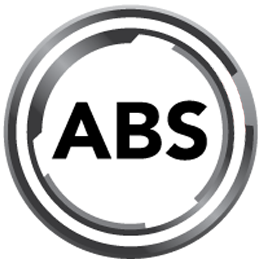Wheel bearings
Wheel bearings enable the wheels to rotate smoothly and with a minimum of friction. Wheel bearings encounter heavy acceleration, braking, cornering. Wheel bearings always have two separate rows of balls or rollers. These are under an angle to make the bearing suitable for both radial and axial loads.
Types of bearings
There are roughly 4 types of wheel bearings.
HUB 0 | These are wheel bearings which consist of 2 separate angular tapered roller bearings. They need to be torqued to the required setting. The pre-load ensures constant contact between the balls/roller and bearing races reducing or eliminating play.
HUB 1 | This version incorporates the 2 bearings rings in one outer casing. It has to be pressed in and torqued to the correct setting but is greased and sealed for life.
HUB 2 | This is a combination of HUB1 and a wheel flange.
HUB 3 | A complete assembly, ready to bolt onto the car. It may even contain the ABS sensor unit.
FAQ Wheel bearings
Q1 | HOW LONG DOES A WHEEL BEARING LAST?
A1 | This is a very difficult question to answer. The wheel bearings on your car can last a lifetime or may not last very long. The actual lifespan of a wheel bearing depends on the conditions that the bearings encounter during their service life.
Q2 | NAME THE 3 MAIN REASONS WHY WHEEL BEARINGS FAIL?
A2A | Faulty installation
Bearings must be accurately pressed into the hub (flange) using the correct tools. Press on the correct bearing race and avoid transferring force over the balls or rollers as this will damage the bearing. Hub 0 needs to be correctly greased. (80% of the empty space in the bearing). Tighten to the correct torque. To loose or too tight will both damage the bearings and drastically shorten their life.
A2B | Driving conditions
Driving conditions also greatly influence the lifespan of wheel bearings. Driving on bad roads, high speed cornering, heavy loads will all impact the bearings. The impact will deform the balls, rollers or the rolling surface and the bearing will fail.
A2C | Car modifications
Fitting different wheels, changing the offset of the wheels, lowering the suspension will increase the load on the bearings. This will also shorten the lifespan.
Q3 | HOW DO YOU KNOW THE BEARING IS WORN?
A3A | Noise, a constant whine or grinding noise.
A3B | Less precise steering response.
A3C| Steering wheel vibrations.
In order to ensure a long service life the ABS wheel bearing kits have strict material properties. Third party laboratory testing shows that material hardness, consistency and construction are all either within the industrial standards or similar to the original part on which the reference is based.

